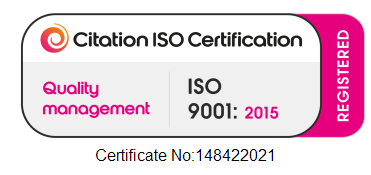Making Sense of eCOA and EDC
If you’re managing a clinical trial, two terms you’ll hear often are eCOA and EDC. Both are essential for data collection, but they serve different roles. Understanding their differences helps you choose the right tools to make your research accurate, efficient, and compliant.
At STK Life, we specialize in custom smart devices that power both eCOA and EDC systems, giving research teams the flexibility to manage patient and researcher data seamlessly.
What Is eCOA?
eCOA, or Electronic Clinical Outcome Assessment, captures patient-reported data in real-time through digital platforms. Instead of paper diaries, participants use secure smartphones, tablets, or wearables to record health outcomes.
The data is instantly transmitted to researchers, improving accuracy, reducing manual entry, and speeding up decision-making.
Learn how STK Life’s eCOA devices make patient data collection faster and more reliable.
Key Features of eCOA:
- Direct patient-reported outcomes (ePRO)
- Real-time data capture and transmission
- Seamless use across smartphones, tablets, and wearables
- Perfect for decentralised clinical trials (DCTs)
Why Use eCOA in Clinical Trials?
eCOA is ideal when patient engagement and feedback are critical to your study. It allows participants to share data remotely, improving convenience and participation rates.
For decentralised or hybrid trials, this technology eliminates travel requirements and ensures real-time monitoring, no matter where participants are located.
See how STK Life supports hybrid and decentralised trials with advanced data collection devices.
What Is EDC?
EDC, or Electronic Data Capture, focuses on the data entered by researchers, clinicians, and labs. It’s the digital hub that stores and organizes the information collected throughout a trial.
Unlike eCOA, which is patient-facing, EDC is researcher-facing, ensuring all trial data—from lab results to clinician notes—is structured, secure, and ready for analysis.
Key Features of EDC:
- Centralized data management platform
- Consistent data entry format
- Simplified data access for analysis
- Integration with eCOA systems for comprehensive data coverage
Explore more in our article on Patient Data Collection Best Practices for 2025.
Why Use EDC in Clinical Trials?
EDC is the backbone for trials with large datasets from multiple research sites. It reduces manual paperwork, maintains data integrity, and ensures faster access for analysis.
At STK Life, we supply custom tablets and mobile devices designed to help clinicians and site staff input data accurately into EDC systems. This combination ensures standardization and compliance across global trials.
eCOA vs EDC: The Key Differences
| Category | eCOA | EDC |
|---|---|---|
| Data Source | Direct from patients via smartphones, tablets, or wearables | From researchers, labs, or clinicians |
| Purpose | Captures real-time patient outcomes | Manages structured clinical trial data |
| Interface | Patient-facing | Researcher-facing |
| Ideal For | Decentralised or hybrid trials | Traditional, multi-site, or large-scale trials |
| Devices | Custom smart devices from STK Life | Tablets and desktop systems integrated with trial software |
While both systems can work independently, many studies benefit from using them together for full data visibility.
In combined setups, eCOA captures patient perspectives, while EDC manages complex research data, ensuring a complete digital ecosystem.
Choosing Between eCOA and EDC
Your choice depends on the type of trial you’re managing:
- For patient-centric studies: eCOA ensures direct, real-time feedback.
- For data-heavy studies: EDC centralizes and standardizes data entry.
- For large or decentralized studies: Both systems integrated provide the most efficient solution.
STK Life helps organizations design integrated device ecosystems that bridge both platforms, allowing seamless communication between patients, researchers, and data teams.
Discover how our customized clinical trial devices enhance data accuracy and simplify remote participation.
FAQs About eCOA vs EDC
What is the main difference between eCOA and EDC?
eCOA focuses on collecting data directly from patients using digital devices, while EDC stores and manages clinical data entered by research professionals.
Can eCOA and EDC be used together?
Yes. Many trials integrate both systems for comprehensive, real-time data management across patient and clinician inputs.
Which is better for decentralized trials?
eCOA is better suited for decentralized or hybrid trials, allowing remote participation through smart devices.
What devices are used for eCOA?
STK Life provides customized smartphones, tablets, and wearables designed specifically for clinical research and patient data collection.
Why eCOA and EDC Work Better Together
Combining eCOA and EDC gives research teams full control over patient data, site data, and overall study performance. eCOA ensures participant engagement, while EDC provides central management for all collected information.
For trials requiring hybrid workflows, both systems can synchronize for smooth, real-time collaboration between sites and participants.
Similar to how integrated wellness programs enhance patient consistency, using both systems ensures balance between patient reporting and researcher oversight.
Conclusion
Understanding the differences between eCOA and EDC helps you make smarter choices in managing your clinical trials. eCOA focuses on patient engagement, while EDC ensures structured, centralized data management.
Choosing one—or integrating both—depends on your trial design and data needs. With STK Life’s advanced devices, research teams can achieve faster, more accurate, and compliant outcomes across every stage of the trial.
Visit the Company page to learn how STK Life’s technology supports data-driven healthcare research worldwide.
Suggested Reads
- Why STK Life Leads Clinical Trial Technology and eCOA Solutions in the UK
- Patient Data Collection Best Practices for 2025
- eCOA Real-World Examples in Clinical Trials
- eCOA vs Paper-Based Clinical Trials: Which Is Better in 2025
- Battery Life in Clinical Trial Devices: Why It’s More Critical Than You Think


